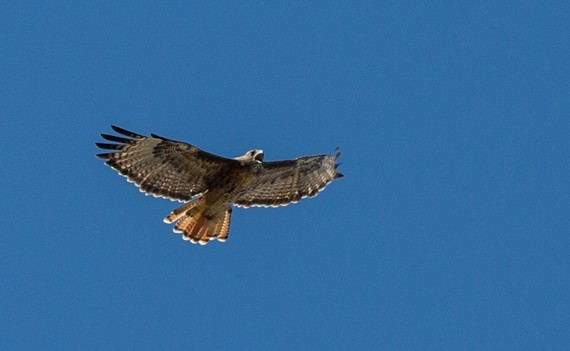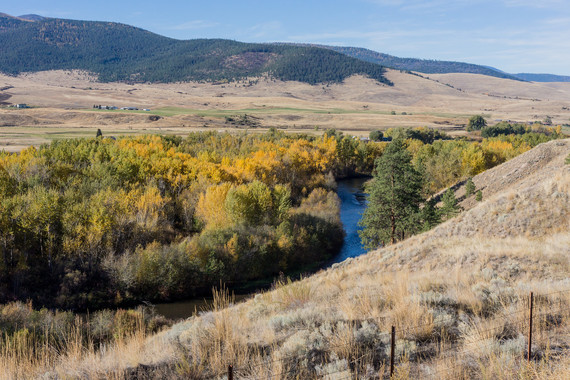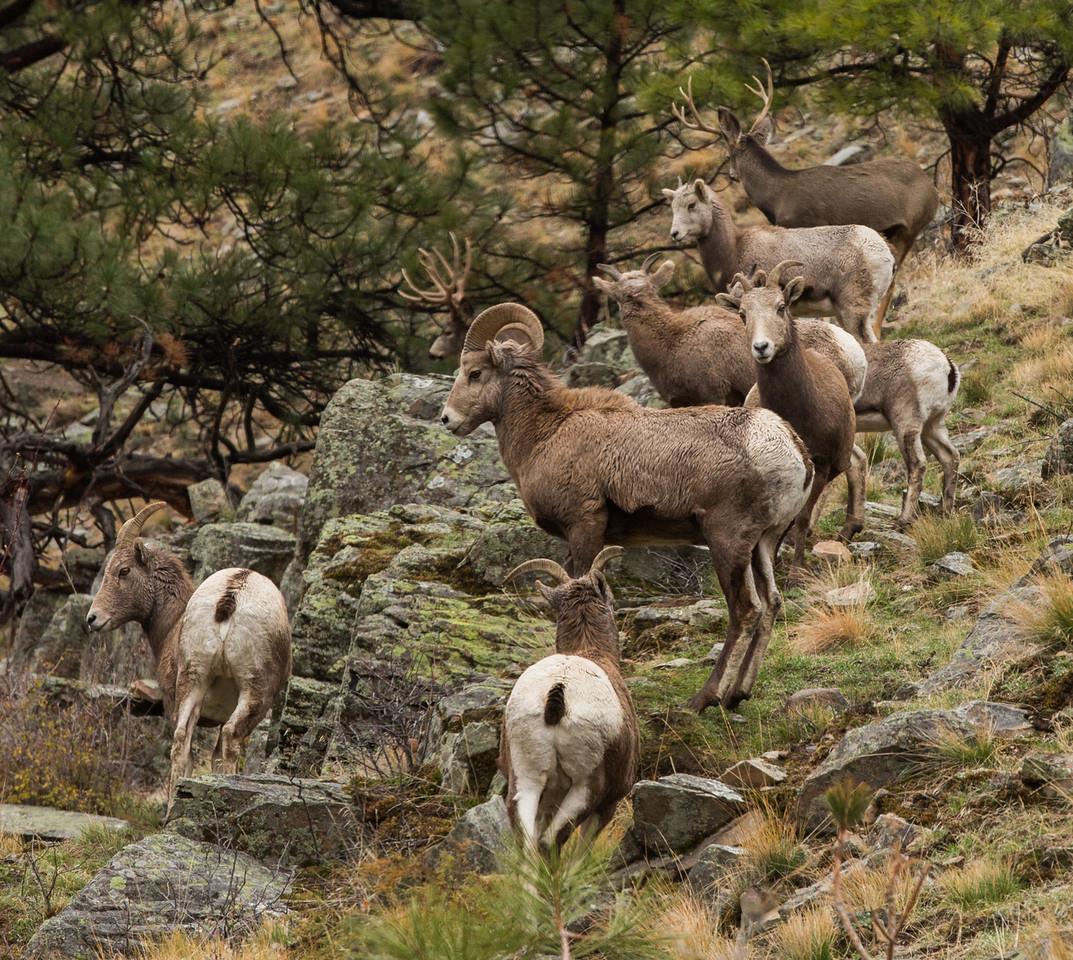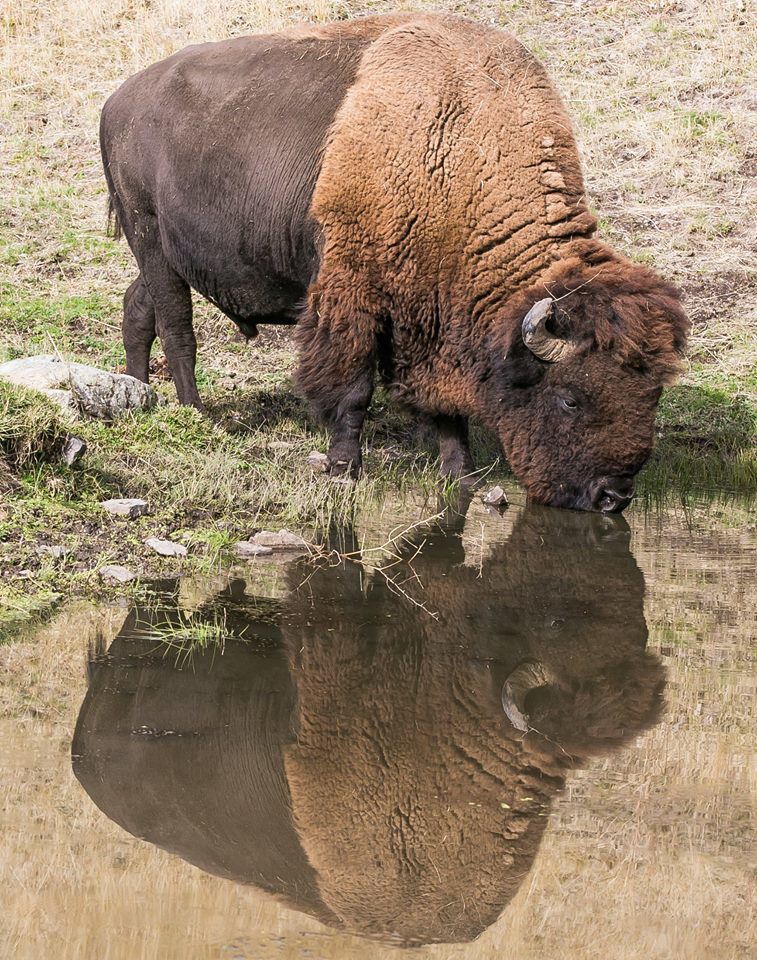|

Volume 4 - September 2019
The U.S. Fish and Wildlife Service, as part of its ongoing efforts to plan for the future of the National Bison Range, recently announced the availability of the national wildlife refuge's final Comprehensive Conservation Plan (CCP) and associated final Environmental Impact Statement (EIS) for review. The final CCP will determine resource management and visitor recreational goals, including public use and access, for the National Bison Range during the next 15 years.
A notice published in the Federal Register on September 6, 2019, opening a 30-day review period.
Requests for information, questions, and comments on the final CCP/EIS may be submitted from September 6, 2019, through October 7, 2019, via email to scoping_NBR@fws.gov or by postal mail to: Bernardo Garza, U.S. Fish and Wildlife Service, Branch of Planning and Policy, 134 Union Boulevard, Suite 300, Lakewood, Colorado 80228.
Following the 30-day review period, the Service will review any comments received, publish the final Record of Decision (ROD), and begin implementing the final CCP.
Read below for additional information and updates.
 Photo: Bison calves at the National Bison Range by USFWS
We, the U.S. Fish and Wildlife Service (Service), are excited to announce that the final Comprehensive Conservation Plan (CCP) and Environmental Impact Statement (EIS) for the National Bison Range (NBR or refuge) is now available. The CCP and EIS details options for managing the refuge for 15 years.
Thank you to all who submitted comments on the draft CCP and EIS. Your comments gave us a better understanding of the issues and concerns. After evaluating the public input, we made some changes in the final CCP and EIS.
This planning update briefly summarizes the public comment process, the three
alternatives considered for management of the refuge, the changes that we made
in the final plan, and the next steps of the planning process.
The plan is available for viewing or downloading on our website at: https://www.fws.gov/mountain-prairie/refuges/nbrc.php
 Photo: Red-tailed hawk soars across an azure sky by USFWS
We published the draft CCP and EIS on April 5, 2019 for a 45-day comment period. Some of the key topics of concern included:
- Visitor Services
- Administration and Staffing
- Native American Policy and Tribal Trust Responsibilities
- Grazing and Habitat Management
- Refuge History
Responses to Comments
We evaluated over 300 comments and developed responses to the substantial issues. These were the issues that (1) questioned, with reasonable basis, the accuracy of our information or the adequacy of our environmental analysis; (2) presented reasonable alternatives other than those found in the EIS; or (3) caused changes or revisions to the proposal. In some instances, we opted to respond to non-substantive comments where the public displayed a strong interest. All of our responses can be found in the final CCP and EIS (Appendix H).
 Photo: Jocko River in autumn at the National Bison Range by USFWS
We developed three alternatives during the planning process and analyzed them in
detail in the EIS. Key actions for each alternative are briefly described here.
Elements Common to All Alternatives
Regardless of the alternative selected, we will comply with all applicable laws, regulations, and policies for management activities on the refuge, such as bison donations, prescribed fire, protection of archaeological and historical sites, as well as staff and visitor safety.
In addition, we would continue to collaborate with our partner agencies and organizations in order to share information (e.g. existing resource plans, traditional ecological knowledge, new
research, best managementpractices, etc.) and collaborate with the Confederated
Salish and Kootenai (CSKT) and other Tribes in developing relevant educational and interpretive materials.
The refuge would continue to sell the refuge-specific pass, as well as the America the Beautiful passes. The Division of Refuges in the Service’s Mountain-Prairie Region developed a Realignment Strategy in 2016 to guide the future staffing of all refuges in the 8-state region. All alternatives proposed in the final CCP and EIS have been developed within the framework of the Realignment Strategy.
Alternative A—Current Management
Under this alternative, we would continue all the current management
activities while maintaining funding, infrastructure, all programs, and staffing with few changes. The Service’s National Environmental Policy Act (NEPA) handbook states that the no action alternative is where current conditions and trends are projected into the future. Because Alternative A represents the current, unchanged refuge management, it may not meet every aspect of every goal.
Alternative B
This alternative emphasizes managing habitat, wildlife populations, and refuge infrastructure and operations to provide quality, wildlife-dependent opportunities for the public. All programs on the NBR would seek to foster public support and appreciation for the resources of our land
and our waters. We would maximize the quality of recreational opportunities by providing improved access, facilities, interpretive materials, and environmental education. We would also aim to enhance the quality of the public’s experience by maintaining healthy wildlife populations and habitats that support activities such as wildlife observation, education, photography, interpretation, and fishing. Working with partners, through existing and new partnerships, is also a key component of this alternative.
Alternative C—Preferred Alternative
This alternative focuses on maintaining and, where feasible, enhancing ecological communities, recognizing ever changing conditions. In cooperation with our partners, we would develop and utilize a prioritization framework to identify and define future conditions that will drive
management actions to build ecological community resiliency, promote species and genetic diversity, and build sustainability in management capacity and operations.
Under this alternative, we would seek to facilitate collaborative, cooperative, and coordinated management of NBR with our federal, tribal, state, local, public, and private partners. Where possible, refuge personnel would participate in landscape level management of wildlife species, evaluate cross-boundary movements, and create corridors conducive to wildlife migration and movement. We would also seek ways to incorporate the expertise, resources, and efforts of our partners to help facilitate the benefits of a broader functioning landscape.
 Photo: Bitterroot plant at the National Bison Range by USFWS
As a result of public comments on the draft CCP and EIS, we made several changes or clarifications in the final CCP and EIS.
We received many comments about the importance of the public use program at the refuge. Several commenters were supportive of the objectives and strategies proposed under Alternative C for public use, but were concerned about the resources we had allocated to achieve the overall goal. In order to better address public use, we have increased the expected full performance level of the Visitor Services Specialist. In addition, we have revised our plans for the new Visitor Center to create greater flexibility to address the needs of the visitors, the staff and partners, and will seek to have the Visitor Center open 7 days a week, May - October, subject to funding.
We have added language to the final EIS/CCP to further clarify the Service’s Native American Policy and our Tribal trust responsibilities. The Service’s Native American policy (510 FW 1)
provides a framework for government-to-government relationships and furthers the United States’ and the Department of the Interior’s trust responsibility to federally recognized Tribes. The policy established a consistent framework nationwide, yet remains flexible, to reflect regional and local variations in history, knowledge systems, applicable laws, treaties, and Service-Tribal relationships. In developing this CCP, the Service has worked with the CSKT to identify ongoing, and future, opportunities for collaboration consistent with this policy. Examples of some of these opportunities include proactively soliciting, and incorporating into our management, information on traditional ecological knowledge from CSKT and other Tribes, as well as collaborating on developing
relevant educational and interpretive materials, including exhibits, interpretive panels, and programs.
We received several comments expressing concern over the grazing and habitat management on the refuge. We have clarified our intent not to endorse permanent changes, but rather recommend conducting a robust analysis prior to development and implementation of the step-down Habitat Management Plan. Our priority is to better inform habitat objectives in a manner that
addresses issues such as those set forth in the comments (e.g. species diversity, invasive species, soils, birds). If the best available science and current knowledge indicates a significant benefit to rangeland health by implementing a new system (rotational or otherwise), current NBR management is in favor of adapting accordingly. All alternatives seek to investigate whether implementation of passive distribution tactics would be beneficial to the habitat and any subsequent plans will promote management specific to the wildlife and habitat resources on the NBR.
We also revised the refuge history and included many suggested editorial comments throughout the document.
 Photo: Bighorn sheep at the National Bison Range by USFWS
The compatibility determinations were finalized and signed in the final CCP and EIS (Appendix D). Appendix H is a new appendix to the EIS which details our responses to the substantive issues raised on the draft CCP and EIS.
While there is not a formal comment period on the final CCP and EIS, we welcome any additional thoughts that you have about the document. Our final decision will be documented in a record of decision published in the Federal Register no sooner than 30 days after filing the final
CCP and EIS with the Environmental Protection Agency. Implementation of the plan will begin following our final decision. We will also publish a final standalone plan. The final plan does not constitute a commitment for funding, and future budgets could affect implementation priorities.
Download the document or get on the mailing list at the CCP website:
https://www.fws.gov/mountain-prairie/refuges/nbrc.php
For a Copy of the Plan
National Bison Range Comprehensive Conservation Plan
Attn: Bernardo Garza, Planning Team Leader
P.O. Box 25486
Denver, CO 80225-0486
Bernardo Garza and Vanessa Fields, Planning Team Leaders
Email: bernardo_garza@fws.gov or vanessa_fields@fws.gov
Phone: (Bernardo) 303-236-4377; (Vanessa) 406-727-7400x219
National Bison Range Refuge Complex
Address: 58355 Bison Range Rd, Charlo, MT 59824
Phone: 406 -644-2211
 Photo: Bison drinking spring water at the National Bison Range by USFWS
|